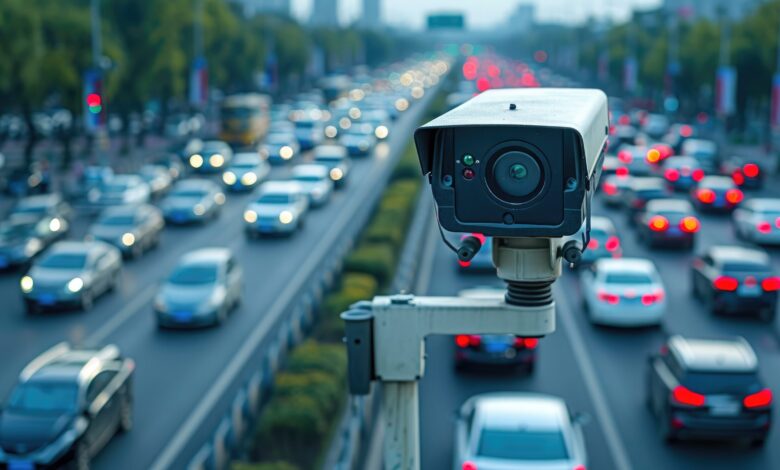Tech and Telematics: Using Data to Prevent Following-Too-Closely Violations

Nobody likes a tailgater. It’s frustrating, dangerous, and one of the leading causes of rear-end collisions. Yet, many drivers don’t even realize they’re following too closely until it’s too late. Technology and telematics are changing that. With real-time data, fleet managers, insurers, and everyday drivers can now monitor following distances and take steps to prevent violations before they happen. This shift isn’t just about avoiding tickets—it’s about making roads safer for everyone.
Telematics combines GPS, sensors, and vehicle analytics to track driving behaviors. Advanced systems alert drivers when they’re too close to another vehicle, helping them adjust before a collision occurs. These tools are especially useful for commercial drivers who spend long hours on the road. Fleet operators can review driving data to identify risky patterns and provide targeted training. For personal vehicles, modern safety features like adaptive cruise control and forward-collision warnings serve a similar purpose. As technology continues to evolve, fewer accidents caused by tailgating could become a reality.
How Telematics Detects Unsafe Following Distances
Telematics systems use sensors to measure the time and distance between vehicles. This data is continuously analyzed, allowing real-time alerts when a driver gets too close. Some systems even adjust speed automatically, reducing the risk of a sudden stop leading to a crash. For commercial drivers, fleet managers can use this information to ensure safer driving habits and reduce liability.
Insurance companies also rely on this data to assess risk levels. Drivers who consistently maintain safe distances may qualify for lower premiums and cost savings over time. On the other hand, repeated violations could result in higher costs and limited policy options. The goal isn’t just punishment but encouraging safer habits that benefit everyone on the road.
Using Artificial Intelligence to Minimize Tailgating Risks
Artificial intelligence has made telematics even more powerful by improving data accuracy. AI-powered dash cams analyze traffic conditions and driver behavior, offering immediate feedback based on real-time analysis. These systems can detect patterns, such as a driver consistently following too closely in heavy traffic, and recommend adjustments to prevent collisions. When integrated with predictive analytics, AI can anticipate risky behaviors before they happen.
Predictive technology factors in elements like weather, road conditions, and traffic flow to determine when tailgating is most likely. Drivers receive early warnings, allowing them to take corrective actions before violations occur. AI-powered systems also provide valuable insights for fleet managers, helping them track long-term driving trends. As AI advances, its ability to prevent accidents caused by following too closely will only improve.
How Commercial Fleets Benefit from Telematics
Fleet vehicles often travel thousands of miles each week, making safe driving a top priority for businesses. Telematics provides insights that help companies reduce accident risks, improve efficiency, and train drivers more effectively. When a driver repeatedly follows too closely, alerts can notify supervisors, allowing for corrective action before an incident happens. Companies that implement these systems often see fewer crashes, lower insurance costs, and improved driver performance.
Beyond safety, these systems also reduce fuel costs for commercial fleets. Aggressive driving, including tailgating, increases fuel consumption due to sudden braking and acceleration. Keeping a proper distance allows for smoother driving, leading to better fuel economy and lower expenses over time. Businesses that use telematics gain both safety and financial benefits, making it a valuable investment.
Legal Consequences of Following Too Closely
Tailgating isn’t just dangerous—it can lead to serious legal trouble if an accident occurs. Many states impose heavy fines for following too closely, and in the event of a crash, the driver at fault may face lawsuits. When tailgating results in injuries, victims often seek compensation for medical expenses, lost wages, and pain and suffering. These cases require strong evidence, and telematics data can serve as crucial proof of driving behavior.
A San Antonio tailgating accident lawyer can help victims navigate these legal challenges. Establishing fault in rear-end collisions often relies on detailed driving records, including speed, braking, and following distance. Telematics provides an unbiased account of what happened, which can be used in court or during settlement negotiations. For both drivers and accident victims, having access to accurate driving data makes a significant difference in legal outcomes.
Using Data to Train Safer Drivers
One of the biggest advantages of telematics is its ability to transform driver education through personalized feedback. Instead of generic safety training, drivers receive reports based on their actual behavior behind the wheel. These insights help them recognize bad habits, such as following too closely, and make necessary adjustments. When drivers see how their actions impact safety, they become more mindful of maintaining proper distances.
Many fleet companies now integrate telematics with driver coaching programs to improve road safety. Safe driving scores, personalized reports, and one-on-one coaching sessions help drivers develop better habits. Training backed by real-world data has a greater impact than traditional safety courses. Drivers who consistently improve their habits also contribute to fewer accidents and better overall road conditions.
How Automakers Are Preventing Tailgating
Car manufacturers are taking an active role in reducing tailgating through built-in safety features. Many new vehicles come equipped with adaptive cruise control, which automatically adjusts speed to maintain a safe following distance. Lane departure warnings and collision avoidance systems further enhance safety by preventing risky behaviors. These innovations are making roads safer not just for drivers but also for pedestrians and cyclists.
Automakers continue to develop smarter technology to minimize human error on the road. Some models now include emergency braking systems that activate when a driver gets too close to another vehicle. These advancements, combined with telematics, create multiple layers of protection against tailgating-related accidents. As more vehicles integrate these technologies, the number of crashes caused by following too closely could see a significant decline.
The Future of Safe Driving with Telematics
The combination of technology and telematics is transforming road safety by reducing risky driving behaviors. From AI-powered dash cams to adaptive cruise control, drivers now have more tools than ever to avoid following-too-closely violations. Safer driving habits not only prevent accidents but also lead to financial benefits through lower insurance rates and reduced vehicle wear and tear. The future of driving looks promising as more individuals and companies embrace these innovations.
As telematics becomes more widespread, fewer accidents caused by tailgating could become a reality. The ability to track and analyze driving patterns encourages better habits and accountability. Safer roads benefit everyone, from everyday commuters to commercial drivers navigating long distances. As vehicle technology continues to advance, tailgating might eventually become obsolete.




